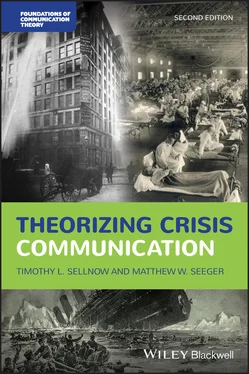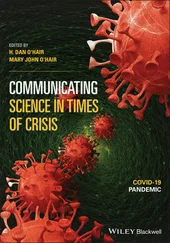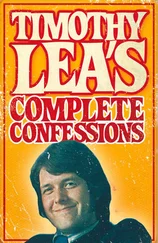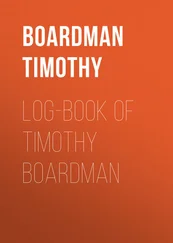1 ...7 8 9 11 12 13 ...22 The following chapters present, describe, and critique a wide range of theories that have utility in explaining how communication functions before, during, and after a crisis. We include explanations of various communication channels, audience behavior and responses, agency coordination, image and reputational repair, and crisis management. This body of theory is highly diverse and interdisciplinary, taking many forms and coming from many disciplinary perspectives. Some are grounded in more general qualitative and social constructivist assumptions, while others are more specific and related to logical positivist epistemologies. This effort to represent a broad sampling of theory allows for a much more comprehensive understanding of the role of communication in crisis and also provides the researcher and the practitioner a broader array of tools. In addition, these theories comment on one another, providing and demonstrating how theory has developed within one particular area of focus. We have grouped these theories into nine chapters. Each chapter represents a family of theory in terms of similar focus or structure.
The chapters are presented roughly in a developmental system. We begin with Chapter 2, a discussion of theory. Chapter 3 presents theories of communication and warning as primary processes occurring when a crisis first emerges. Warnings, including evacuations, are central tools in limiting harm with many types of events. Theories of communication and crisis development are presented in Chapter 4. Failures of communication are closely associated with the onset of crisis, and specific communication processes are associated with each stage of crisis development. Theories of communication and crisis outcomes (Chapter 5) and theories of communication and emergency response (Chapter 6) examine efforts to explain, model, and respond to the post-crisis conditions. Communication is generally recognized as an essential tool for agencies and communities seeking to mount an effective response. Theories of communication and crisis (Chapter 7) describe efforts to characterize and explain the role of legacy media. Chapter 8 focuses specifically on theories dedicated to explaining the role of social media in crisis communication. Chapter 9 explores theories of influence, including persuasion and rhetorical approaches to crisis communication. Theories of communication and risk management, covered in Chapter 10, draw on the very well-developed body of scholarship in risk communication. Theories of communication and ethics ( Chapter 11) reflect our belief that crisis always involves questions of good and bad, right and wrong, and desirable and undesirable. Finally, in Chapter 12, we explore the ways in which crisis communication theory can be applied and expanded.
Crises are powerful forces of individual, organizational, community, and social disruption and change and communication plays an essential role in the ways in which crises emerge, are managed, resolved, and understood. Theory is an important tool for both investigators and practitioners. These events create high levels of uncertainty, confusion, chaos, and harm that theory and research can help explain, predict, and control. Communication is constitutive of the organizations responding to crisis and the organizations emerging from crisis. Moreover, communication is the way we come to understand and make sense of crises. As crises become more frequent and the impacts touch more people, the theories of crisis communication can help in avoiding crisis, mitigating harm, and recovering more quickly and completely.
2 Theorizing about Crisis and Crisis Communication
In this chapter, we discuss definitions of theory, theory’s role and function, and the various forms theory takes. We also explore the traditional theory-practice divide and the movement to develop practical theories to bridge the divide. A framework for a meta-theory of crisis communication is presented. Our view is that theory is a necessary component to any effort to create systematic understanding. Theory plays an especially important role when there is confusion and uncertainty about what is happening, why, and what the consequences might be, such as during a crisis. We also believe that theory is critical to practice, or as noted social scientist Kurt Lewin observed, “There is nothing so practical as a good theory” (1951, p. 169).
Arguably, theory is the most important tool researchers have for building broader understanding of any phenomena. Theory is also a widely misunderstood concept often denoting an esoteric and generalized abstraction bearing no relationship to reality or practice. This is reflected in the common statement: “Well, that’s all well and good in theory, but it doesn’t work in reality.” Theory by definition must be related to the reality it seeks to explain; in its most basic form, a theory is simply an explanation created for something that needs further understanding. Theory is an abstraction of reality, a way of framing, modeling, and understanding what is observed to be happening. By explaining the reality of what is observed, theory can be used to inform practice. On one hand, formal theory can be quite rigid in its efforts to describe a formal system or proposition framed in a way that allows for developing specific predictions, testing, and validation. On the other hand, a theory can be as simple as an individual’s expectation based on observations and experiences. These lay theories are formulated by all of us and help us explain, organize, and make sense of the world we experience. Theories, formal or informal, are simply sensemaking devices, sets of concepts, definitions, or ideas that allow individuals to organize observations in ways that account for the observations they make about the world.
One of the traditional conceptualizations of theory and research makes a distinction between basic research, which is associated with theory development, and applied research, which is associated with practice (Stokes, 1997). Basic research does not consider the practical ends of the work and seeks to identify fundamental theoretical concepts and principles (Reagan, 1967). Traditionally, basic research was valued over other forms in part because it was not influenced by practical issues and problems. Applied research is more likely to be influenced by practical or even political concerns. Theory and principles of application are both improved, however, when they are developed and refined in relation to one another.
The relationship between theory and practice is complex and dynamic, governed by disciplinary norms and conventions, and influenced by changing political and economic forces (Hutchings & Jarvis, 2012). Some disciplines rely heavily on theory while others are more application and practically oriented. In many cases, practice comes first and leads to the development of theory. The relevance of fields of study changes as social conditions change. Issues or problems emerge, giving rise to investigations and the development of theory. The 9/11 terrorist attacks, for example, promoted a surge of government-funded research seeking to solve a range of practical problems, including interoperability of first responder communication systems, effectiveness of warning and risk recognition systems, the factors associated with resilience, and the conditions that might give rise to terrorism. The emergence of new infectious diseases, such as the Zika outbreak and COVID-19, spur programs of research, which in turn give rise to theories. Crises often point out unforeseen issues, problems, and areas of vulnerability that then require systemic programs of research. In many cases, researchers must move very quickly to help address practical issues associated with emerging risks. During the early stages of the COVID-19 disasters, a group of microbiologists, material scientists, engineers, and clinicians from around the country came together to investigate protocols for decontaminating the N95 masks used to protect medical and frontline workers. These protocols were needed to address a severe and immediate shortage of personal protective equipment created by COVID-19.
Читать дальше












